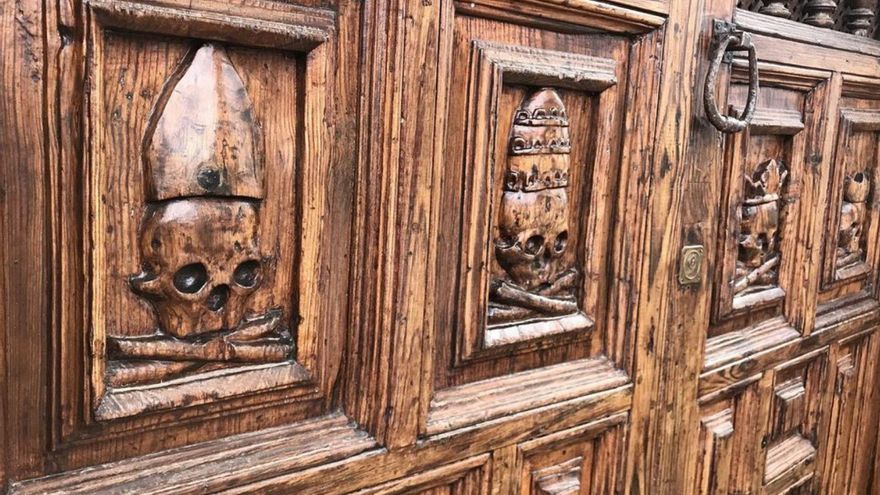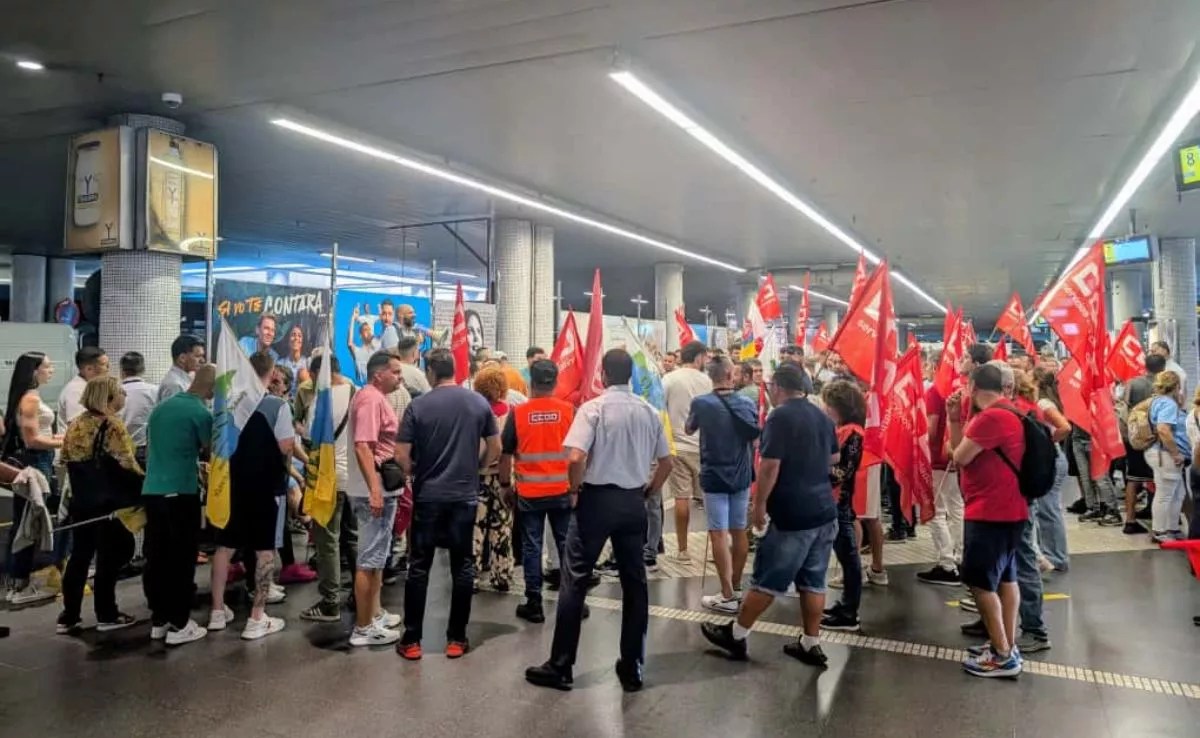
Students of the IES La Cruz Santa participate in the first edition of the 360º Treasures route, which reviews some of the most symbolic elements of Villa de La Orotava related to death and allows students to investigate original documents from the 17th and 18th centuries and XIX.
The Sacred Art Museum El Tesoro de la Concepción, in La Orotava, premieredon November 2, a new route, 360º treasuresfor high school students that goes through places related to the culture of death and allows students to discover, first-hand, stories of crimes, diseases and witches, hidden in old books and files from the 17th, 18th and 19th centuries, which are preserved in the Parish Historical Archive. A total of 17 students from the IES La Cruz Santa, from Los Realejos, had the opportunity to premiere this educational tour among tibias, skulls, tombs, coffins and crime scenes. A route so original and unusual that it focuses the attention of the most mobile teenager, who has no choice but to attend and assume that this route is to die for.
Led by the educator and cultural mediator of the Museum of Sacred Art of La Orotava, Natalia Álvarez, the group began the tour in the Church of San Juan, in Villa Arriba, where they could see an old wooden door that reminded the faithful that “we are all going to die”. Tibias and skulls made it clear to the eyes of the more and less educated that death also knocks at the door of bishops, popes, kings and priests. One of the memento mori (remember that you are going to die, in Latin) that can be seen in that temple, where paintings of souls or Saint Michael are also present, “who plays the same role of savior of souls as Anubis in Egyptian culture Alvarez recalled.
The passion children or children of the passion, which showed a young Jesus lying on a skull or crucified, were also a reminder that death comes to everyone, even the son of God. In the church of San Juan he sleeps on a skull, under the Virgen de Los Remedios.
In the talk there is time to discover the scapulars or the past of the Virgen del Carmen, before going through the Hospital de la Santísima Trinidad, its lathe to abandon babies or the legends and myths of a building, now converted into a municipal wake, which it still houses a disturbing “room of perennial pain”.
On the way to the cemetery, stories of catalepsy arise, false deaths of people who return to life, like Manolito El Muerto, who kept that nickname for the rest of his life after rising from the coffin on time. The students discovered the origins of cemeteries, as a way to fight against epidemics; the old postmortem portraits; the different types of burials; the mass graves; the mourning; the ranchos de ánimas, which raised funds for masses for the dead, or tombs adorned with the remains of an old Jesuit school in La Orotava.
Another stop is the Victoria Garden, the mausoleum unsuccessfully conceived for the eternal rest of Diego Ponte del Castillo., a man repudiated by the church for his relationship with Freemasonry. The walk continues through alley houses where human remains were found, ravines where crimes were committed and places of execution. In the talk, the witch dances or the meaning of “welcome sacred” are mentioned.
In the Parish Historical Archive, next to La Concepción, All the protocols for the conservation and management of old documents are followed to give the public the opportunity to be surprised by files and books from 1698, 1737, 1822 or 1935. Documents in which they must investigate the appearance of a dead child in El Calvario, in the Villa; the murder of a woman; the most common causes of death by disease in the 19th century, or the sudden death of a baby who is said, 285 years ago, to have been “sucked by witches”.
The Museum of Sacred Art is the last stop and there, these 1st year Baccalaureate students of Social Sciences learned to fill out a simple inventory sheet of pieces such as a 17th century coffin, from the Brotherhood of San Pedro, which was used for transfer the deceased religious to the place of burial. Of the Virgin of the Dormition or of diverse textile pieces. Some of them had to measure and describe, for the first time in their lives, an old polychrome coffin with a miter, a skull and two authentic tibias inside.
These educational initiatives of the Museo Sacro de la Iglesia de la Concepción have the financial backing of the La Orotava City Council, which allows educational activities to be free for all schools and institutes in the municipality and also in the other two towns in the Valley: Puerto de la Cruz and Los Realejos.















